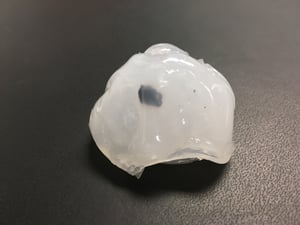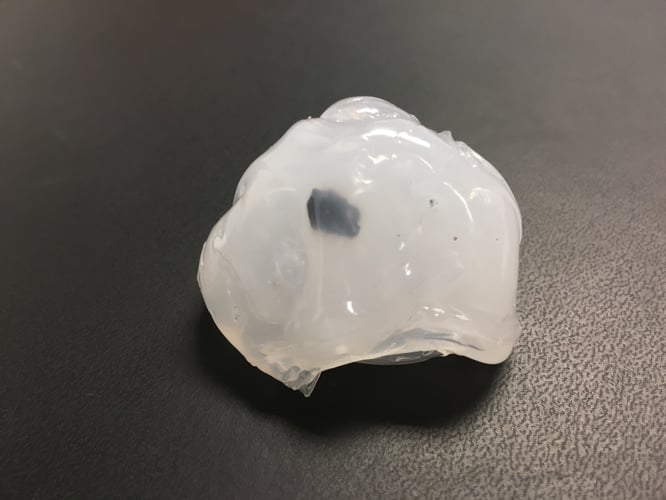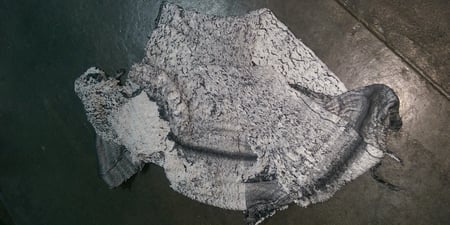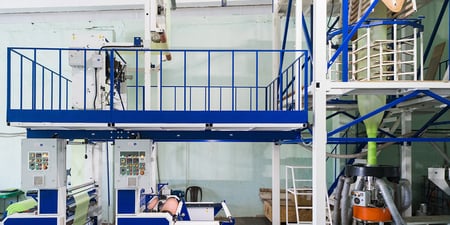
PE resins in particular can be prone to gels and black specks – these are a structural defect that tend to occur when exposed to elevated temperatures in the presence of oxygen. Gels will not only affect the aesthetics of a product but the end quality of the product too. They can be formed at one of three stages during production:
- Manufacturing of the raw material - during polymer reaction
- Granulation/Compounding.
- Conversion – Extrusion (Blow Molding)
During the conversion process (extrusion or molding), PE resin can easily stick to the metal surface in low flowing areas on the screw. When the equipment is shutdown while empty, oxygen will enter the barrel, as the metal cools down and subsequently re-heats in the presence of oxygen- the residue will eventually oxidize leading to its discoloration over time. When you then go into start-up, for the first few hours of a production run the appearance of specks can lead to a large volume of waste material. The hang up can be present anywhere in the system and often the specks will appear in the middle of a production run with no warning. This is extremely disruptive and costly during production.
Gels and black specks are much more problematic in certain polyethylene applications than others. In blow molding, the presence of gels and black specks can lead to the formation of holes and cause blow outs – leading to a structural NOT just an aesthetic problem. Even if the defect doesn’t necessarily lead to holes, it can be visible on the surface and diminish the apparent quality of the article. This can be especially pronounced in products such as milk bottles where black specks will easily stand out. Film extrusion is another application where gels and black specks can be problematic. Excessive defects in film affect its appearance and can go on to cause further issues when it comes to printing, and in some cases may lead to holes in the film.
As discussed, these structural defects can seriously compromise the quality, aesthetics and performance of the manufactured product. The solution to avoiding such issues lies in the control of equipment operating temperatures, the amount of oxygen that is present, and the shut down and start-up procedures.
Often a simple purging regime can prevent the oxidation from occurring and will allow you to reduce waste, in some cases by over 70%. Our shutdown and sealing procedure recommend purging the machine at the END of each run, and to leave the purge compound inside the barrel if going into shutdown. Keeping the barrel full creates a seal which prevents oxygen from entering the barrel.
By preventing the degradation of the residue, in turn you can prevent the black specks and gels from occurring. This can save a lot of time and money. If you attempt to purge at start-up (after degradation has occurred) tackling the black specks is usually much more time consuming and costly. You may need to pull the screws and take apart the machine. Proactive use of a purge compound in these cases is much more cost effective.
Ready to reduce your production downtime to protect your profits? Learn more about how purging compounds and process efficiency work in tandem.

Kiran Raza is an Asaclean Purging Expert & Technical Sales Representative. She's worked in the plastics industry for nearly 20 years and has expertise In Bio-Medical Materials, Polymer Processing, and Materials Testing.







Comments